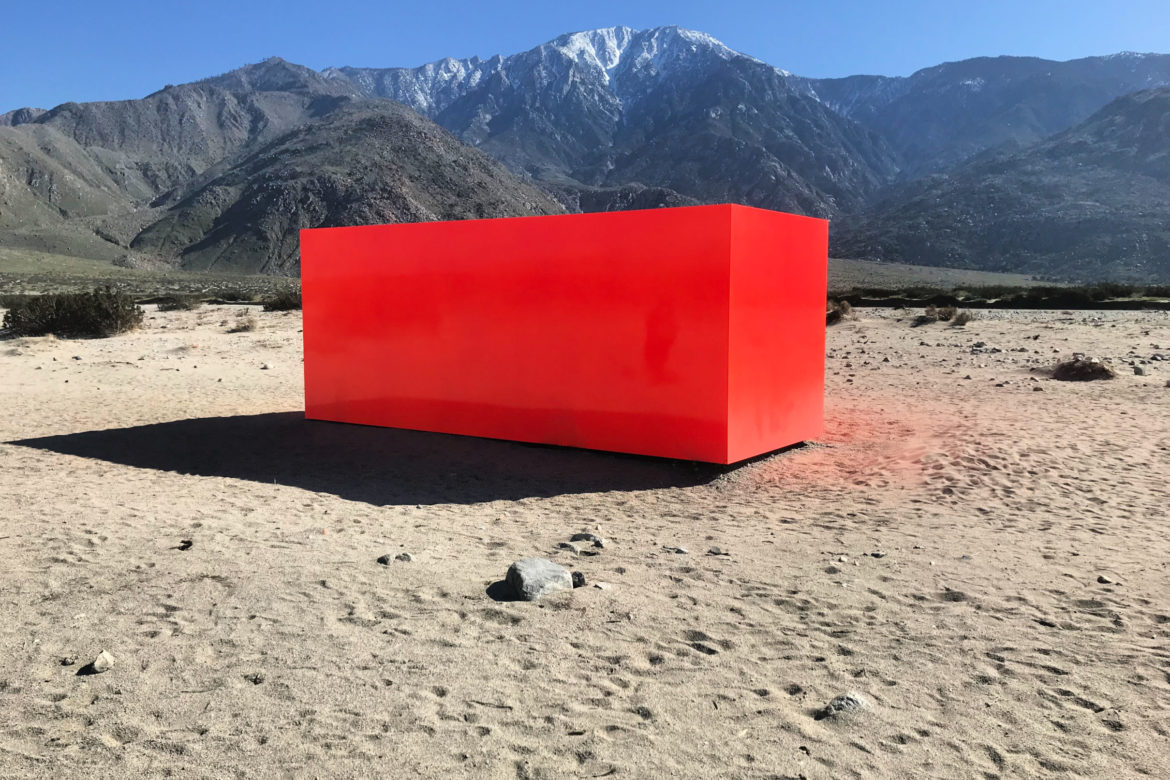
4 More Amazing Desert X 2019 Artists
Desert X, the biennial art show happening in the Coachella Valley, California, descended upon the desert like the uncharacteristic rains this past winter. The works were on display from February 9 – April 21, 2019. The show is comprised of twenty artists, featuring work from the North of Palm Springs all the way to the Salton Sea. My first post about Desert X included four artists whose installations are near the Salton Sea: read about it here. While I was in Palm Springs for AltSummit, I was able to check out a few more of the artists.
My first stop was Irish artist John Gerrard’s “Western Flag”, situated right behind the Palm Springs Visitor Center (a mid-century building with its own unique history: read about it here). Gerrard’s installation is one of a handful of this year’s works which incorporate technology into the piece. The installation is an enormous LED-screen sculpture, with the gorgeous San Jacinto mountains behind it. On the screen is a lonely flagpole in the middle of a rather desolate landscape. Instead of a flag, smoke is gushing out of the pole in the form of a virtually simulated flag. The piece depicts the site of the “Lucas Gusher”, the world’s first major oil find in Spindletop, Texas in 1901. That site is now totally depleted of the oil that once spewed forth. Western Flag gives visible form to the invisible – carbon dioxide – the byproduct of our industrialized lives. What sets Gerrard’s work apart is that instead of film or video, he uses real-time computer graphics in his work. The ‘Lucas Gusher’, when first discovered in 1901, produced more oil in one day than the rest of the world’s oilfields combined at the time, though now it is fully depleted.
Through the use of real-time computer graphics, the piece precisely parallels the sunrises, sunsets and shadows of the real-life Spindletop, reflecting the changing Texas landscape in real-time. At night, the installation goes dark and during the day, the sun shines bright, as the flag of smoke waves ominously, a reminder to humans about the environmental price we pay for our use of fossil fuels.
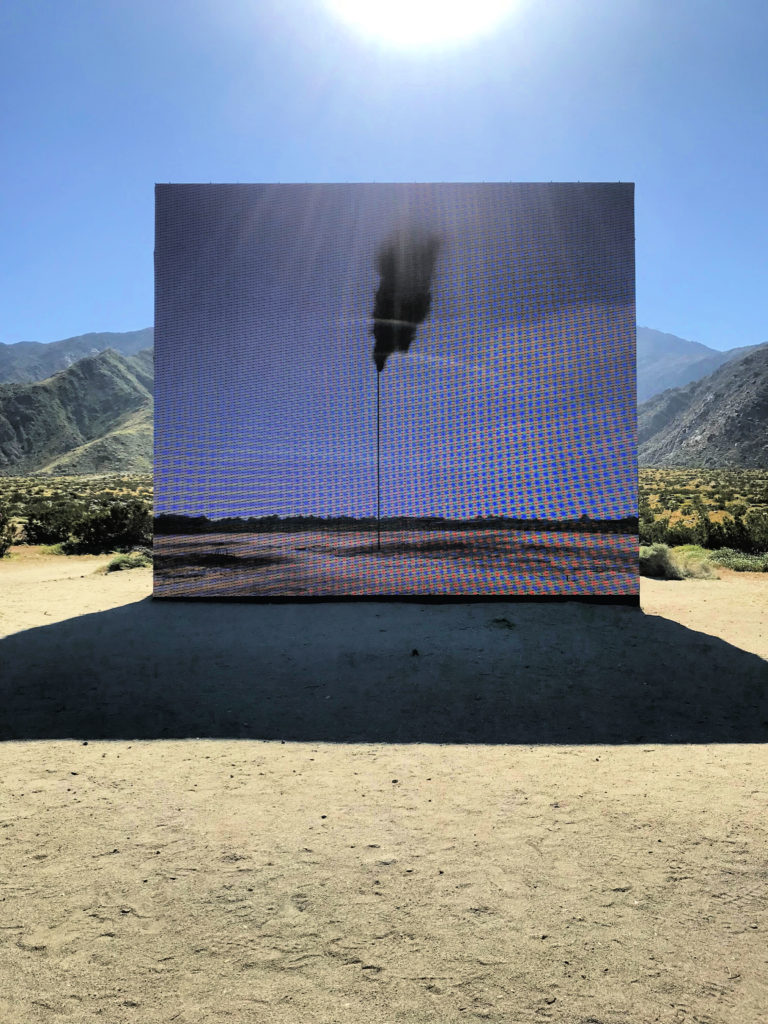

One of my favorite works is Sterling Ruby’s “Specter”. For one, I love color see my Instagram feed for proof.) For another, I love “Is it Art or is it Architecture” type works of art. As an artist, Ruby is known for the multi-disciplinary range of his practice including painting, ceramics, collage, video, photography, textiles, sculpture and installations. His interest in architecture and space and his psychological experiences are all revealed in this piece. A large, bright orange monolith, it is both a question mark and an exclamation point. Its fluorescence is emphatic and shocking, set against the backdrop of the nothingness that is the desert. But it also asks questions. Why a rectangle? Why that color? And what color is it precisely? The psychedelic orange color changes depending on the angle it is viewed, the time of day and even the camera with which the piece is shot. Even more interesting is to see the edits viewers have made to their Instagram posts at #sterlingruby. In one shot, the saturation is pumped up so high, it is almost red. In another, the rectangle was edited to be translucent in a black and white landscape. Perhaps this work represents the possibility of what it could be more than what it actually is.
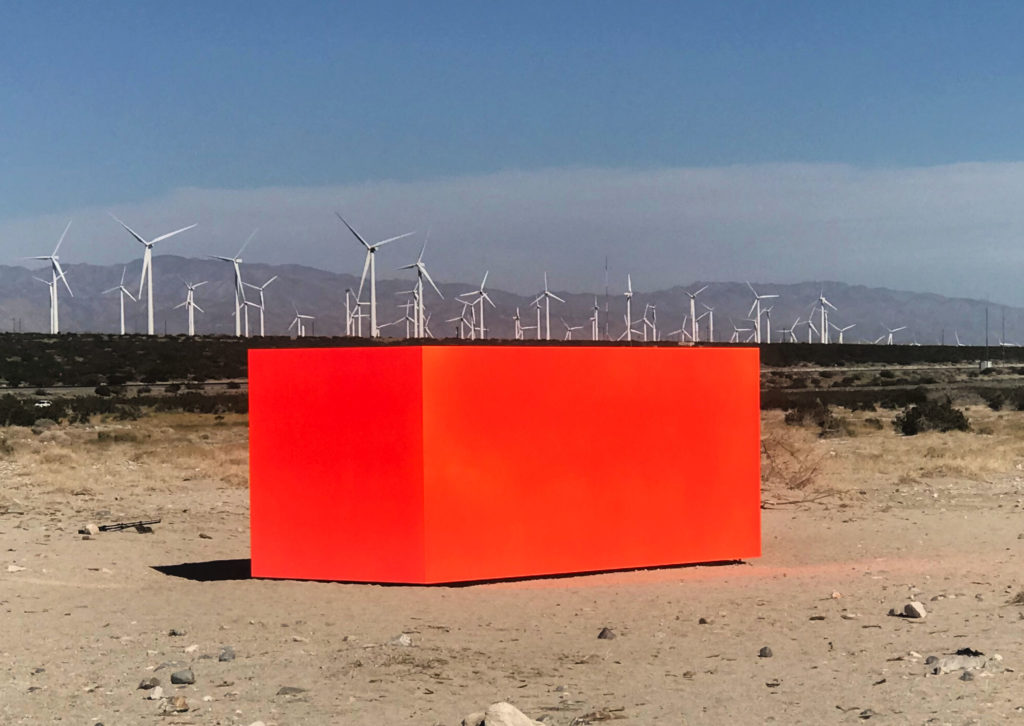
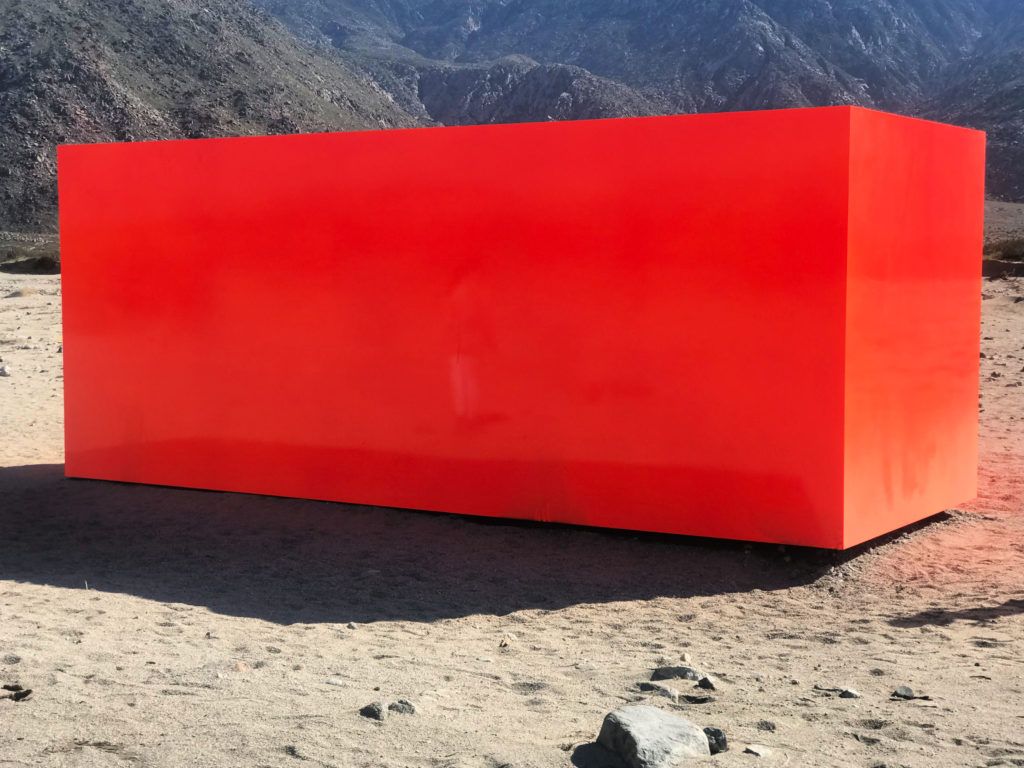
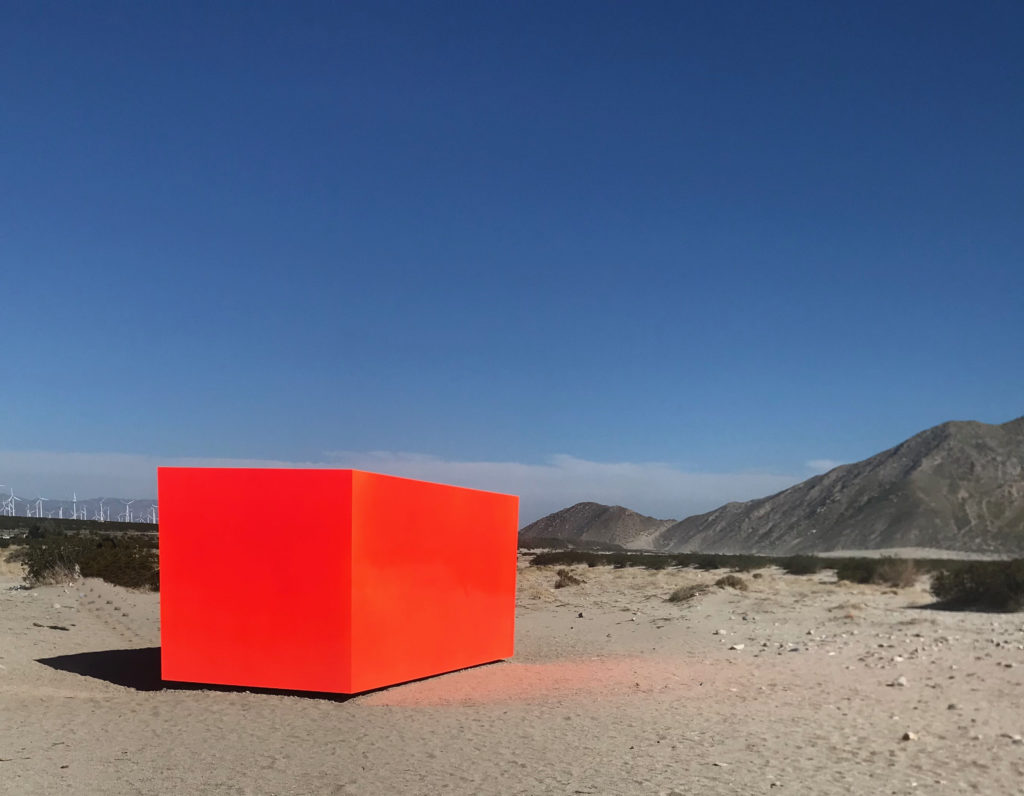
Pia Camil’s “Lover’s Rainbow”, is literally a rainbow fashioned from painted rebar. When we think of rebar, we think of it poking up vertically from poured concrete foundations as buildings get built. In certain parts of the world, exposed rebar can signify financial troubles or dead dreams as construction on homes is started but isn’t able to be completed; and so, the exposed rebar waits until more money comes in and the construction can continue. On the other hand, rainbows, of course, symbolize new beginnings and hope. For Camil, the act of bending rebar back into the ground, in the arc shape of a rainbow, is the act of reinserting hope into the land. (There is a sister piece in Tijuana, Mexico that I did not see.)
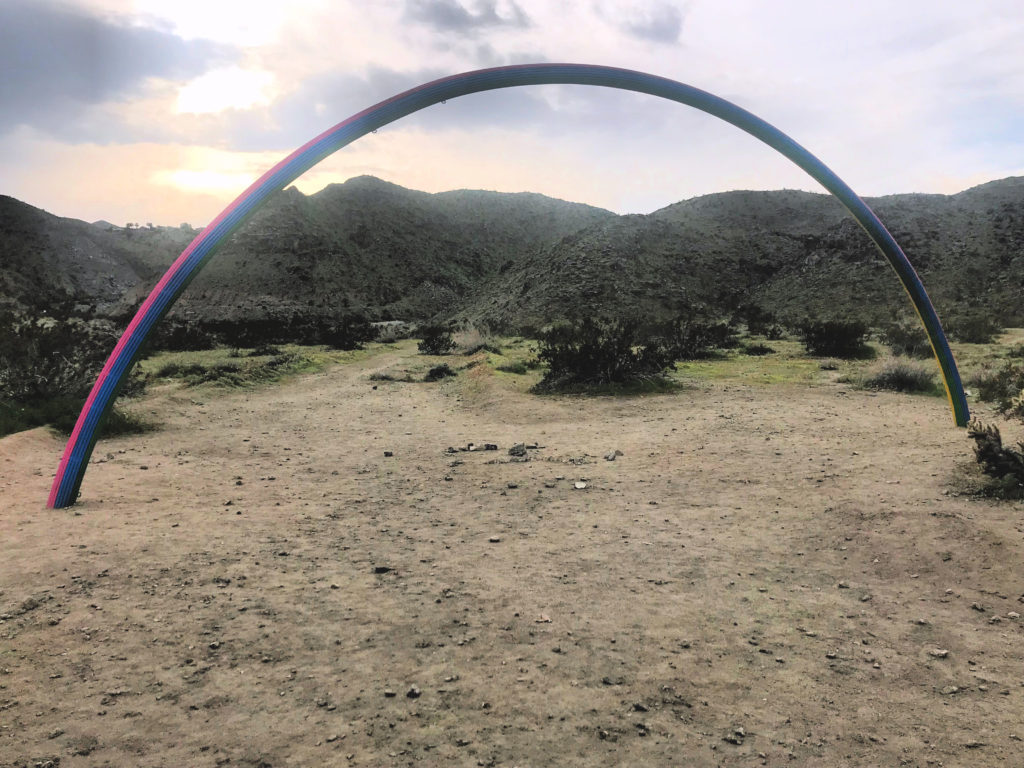
Finally, “Dive-In” by the Danish collective “Superflex” is an example of what the three Danish artists call “Fish Friendly Architecture”. Again, in the realm of “Is it Art or is it Architecture?” and again, wildly colorful (pink!), this installation was fascinating. A bit of background: at one point, millions of years ago, the desert was actually a sea and the fossilized remains of the aquatic life that once was still litter the desert floor. In fact, the Spanish settlers who came to the region called the valley “Conchilla”, which means ‘small shell’ in Spanish. Due to a mis-spelling, the valley is called the Coachella Valley.
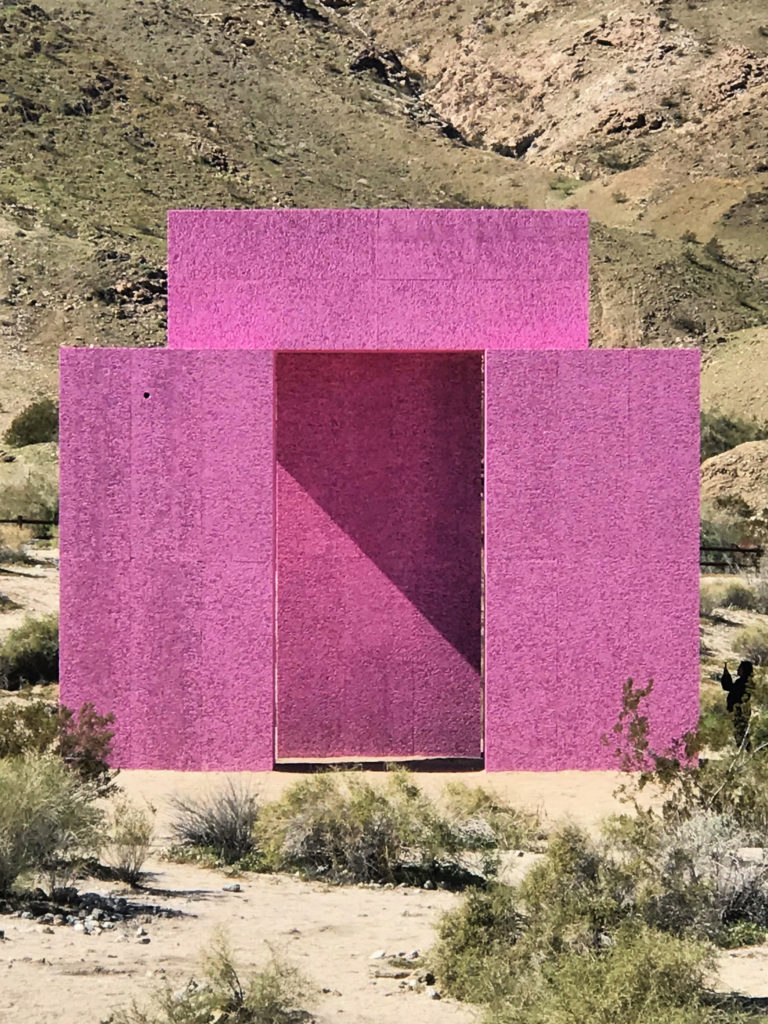
As concern for global warming causing rising seas grows, Superflex wondered what that means for architecture? If coastal cities find themselves submerged, what happens to the architecture? First, the buildings formerly inhabited by humans will now be inhabited by sea creatures. Therefore, shouldn’t we consider ‘fish friendly’ architecture? In “Dive-In”, for example, they used a foam/ mesh type of material to build the structure, whose porous makeup could allow fish to nest and breed. Second, the bright pink is a reference to reef builders which are attracted to the color pink (as well as a nod to the abundance of pink found in Palm Springs). Finally, on weekends, the piece becomes a “Dive-In” and a giant screen in the middle of the structure projects a movie in which fish move about. The reference to another extinction, the Drive-In, further emphasizes the importance of contemplating what our future habitats will look like.
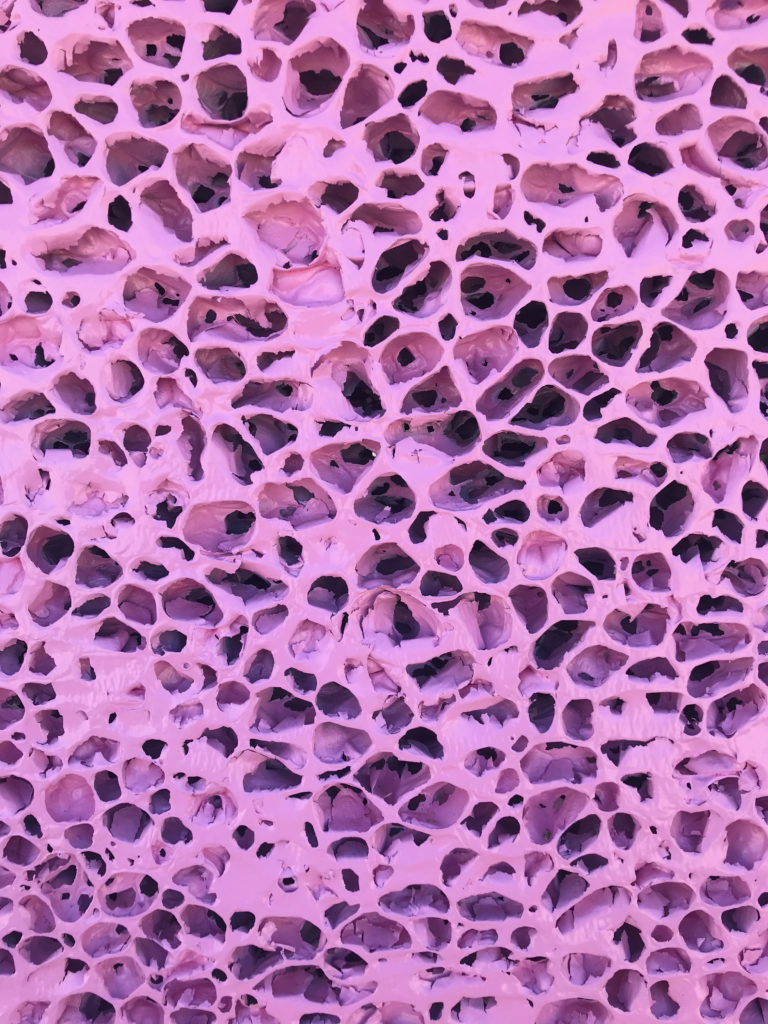
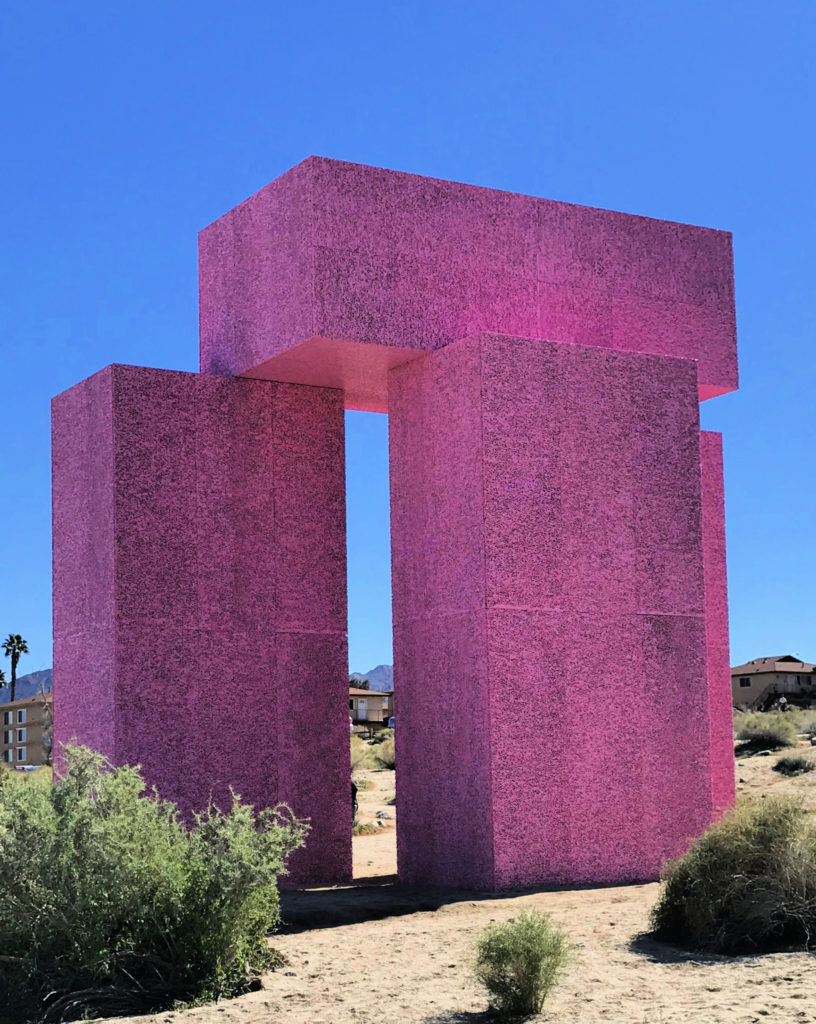
Overall, this year’s Desert X was a huge success, in spite of some challenging situations, whether it be extreme weather or the vandalism of a few of the works of art. The artists brought thought provoking, surprising, colorful works of art to display in the backdrop of the mystical and gorgeous Coachella Valley.
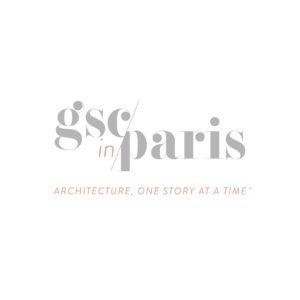

Leave a Reply